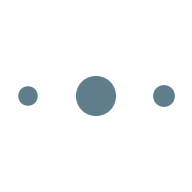
Hiroki Higashi (Written by)
Kodansha (Publishing House) / Kodansha Hyundai Shinsho
2001November 20 (Release date)
New book (Format)
A book that analyzes Japanese postmodernity from the culture and behavior of geeks.。
Postmodern 1960s、1970about the cultural world of the ages、It's like a big story is falling.。
The surface of the simullercle = a small story and、The author claims that the postmodern model is the two-layer edifice of a large non-story database.。
Media Mix、Moe Element、It seems that cara moe can explain from this point of view.。
Also、There's also animalization going on.、Animal nature at the level of simullerul、that humanity at the database level coexists dissociatively。
I see.
The rest、Mobile battleship Nadesico or Saber Marionette J or something、The topic of yu-no the girl who sings love at the end of the world comes out、I missed you.。
I'm almost unseen.、I know the name because it was a topic at the time...
Related Posts
- Chart Formula Mathematics 1 Part10 [Secondary Function Edition] Toshikazu Sunada (Written by)Zuken Publishing Co., Ltd. (Publishing House)2003April 1, 2016 (Release date)Hardcover (Format) 今日も2次関数のB問題を進めていこう。問30からだ。(1)は普通に場合分けをして絶対値を外せばいい。(2)がこの問題のポイントとなるところだろう。【1】\(x\ge a\)のとき、\(a\ge \frac { 1 }{ 2 } \)の場合と\(a<\frac { 1 }{ 2 } \)の場合で最小値\(m\left( a \right) \)が異なるので、場合分けする。同様に【2】\(x<a\)のときは、\(a>-\frac { 1 }{ 2 } \)の場合と\(a\le -\frac { 1 }{ 2 } \)の場合で場合分けが必要だ。そしたら\(a\ge \frac { 1 }{ 2 } \)、\(-\frac { 1 }{ 2 } <a<\frac { 1 }{ 2 } \)、\(a\le -\frac { 1 }{ 2 } \)の場合で【1】と【2】のそれぞれの差をとってどちらがより小さいかを明らかにし、関数\(f\left( x \right) \)の最小値\(m\left( a \right) \)を求めることになる。僕はグラフを見てなんとなく直感で解いたが、それではダメだったんだな。しっかり場合分けが必要みたいだ。(3)The (2)がちゃんと解けていれば簡単だ。 次は問31。First(1)。今\(a\)、\(b\)、\(x\)、\(y\)全てが正の実数なので、以下の不等式 $$\frac { x }{ a } \le \frac { y }{ B } $$ の両辺に\(ab\)をかけたり、2乗したりしても、不等号の向きは変わらないし、通常は2乗することで生じる余計な解が含まれることもない。あとは条件式を利用して\({ y }^{ 2 }\)を消去すればいい。(2)The (1)から\(0\le x\le \frac { a }{ \sqrt { { a }^{…
- Explores the causes from the concept of inverse problems in mathematics 上村 豊 (Written by)Kodansha (Publishing House) / ブルーバックス2014年12月19日 (Release date)New book (Format) 逆問題について書かれた数学の本。原因から結果を予測するのが順問題で、逆に結果から原因を探るのが逆問題だという。逆問題の哲学は現象から自然を探ることにあると著者は言う。ギャグが多用されて話が進められていくが、内容はなかなか難しい。 行列の連立1次方程式という線形代数の分野があったり、恐竜絶滅の原因を探る生物学?に話が及んだり、プランクのエネルギー量子発見についての理論物理学の分野が紹介されていたりする。他にも海洋物理学や量子力学の分野について述べられていたりと様々なテーマにおける逆問題が、実際に計算式を示しながら説明されてゆく。僕はよく分からない部分もあったが、感覚で、そういうものなのかと式を流し読みしながらパラパラと読み進めていった。 あとがきで著者は次のように述べている。 現代科学において、逆問題の発想は仮説を法則や原理へと昇華させるために初期のそして重要な段階で、決定的な役割を果たしてきた。そう見るべきであろう。(p.259) 逆問題という用語も概念もまだ生まれていなかった過去においても、科学者は模索から生じた仮説に基づく逆問題を解くことによって理論を先へ進めてきたみたいだ。I see.。僕ももっと勉強しないとなと思いました。
- How to create Masaaki Takane (Written by)Kodansha (Publishing House) / 講談社現代新書1979年9月20日 (Release date)Kindle version (Format) Books written about social science methodologies。An author who has studied in the United States and obtained a job overseas、Graduate School Study in the USA、Learned from research activities、It is said to be a guide to research methodologies。But、More than just the social sciences、知的活動に携わる者ではいずれにせよ同じような方法論が必要になってくるらしい。 本書では実験的方法、数量的研究、質的研究、組織的比較例証法、参加観察法などの方法が述べられていた。僕は疲れてきて、後半はサラサラと本書を読んだので、分かったような分からないような感じだった。著者は西洋の既成知識を獲得することよりも、新しい知識の創造が大事ではないかと言う。なるほどな~また、現代においては高度な理論を駆使することなしには重要な発明や発見を行うことはできないとも言う。理論を構築しないといけないんだな~ あとは、筆者の体験からアメリカの大学院の雰囲気などが感じ取れておもしろかった。アメリカの大学はかなり厳しいらしい。僕もぬるま湯につかってないで、がんばろう!

